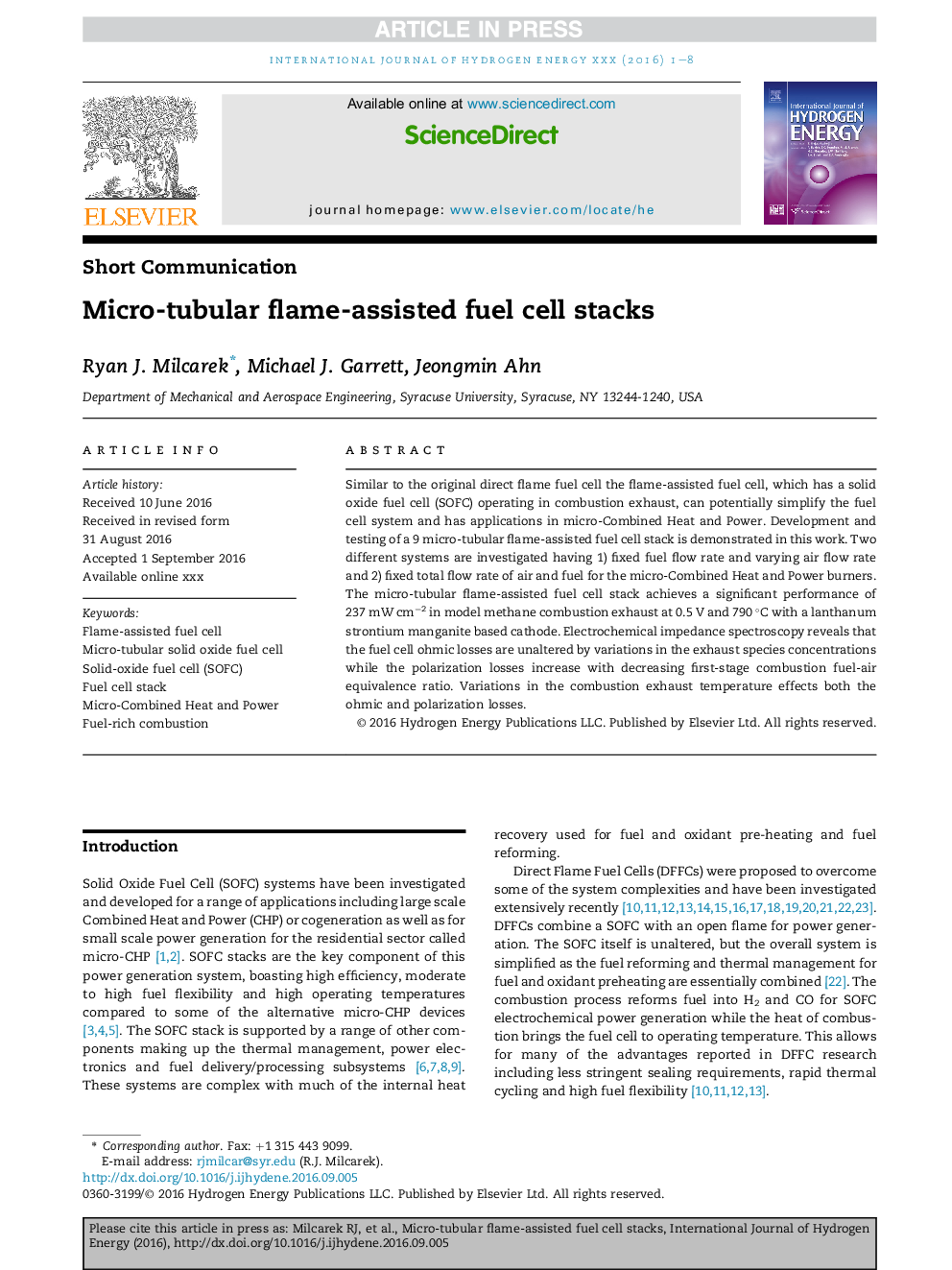| Article ID | Journal | Published Year | Pages | File Type |
|---|---|---|---|---|
| 5146895 | International Journal of Hydrogen Energy | 2016 | 8 Pages |
Abstract
Similar to the original direct flame fuel cell the flame-assisted fuel cell, which has a solid oxide fuel cell (SOFC) operating in combustion exhaust, can potentially simplify the fuel cell system and has applications in micro-Combined Heat and Power. Development and testing of a 9 micro-tubular flame-assisted fuel cell stack is demonstrated in this work. Two different systems are investigated having 1) fixed fuel flow rate and varying air flow rate and 2) fixed total flow rate of air and fuel for the micro-Combined Heat and Power burners. The micro-tubular flame-assisted fuel cell stack achieves a significant performance of 237 mW cmâ2 in model methane combustion exhaust at 0.5 V and 790 °C with a lanthanum strontium manganite based cathode. Electrochemical impedance spectroscopy reveals that the fuel cell ohmic losses are unaltered by variations in the exhaust species concentrations while the polarization losses increase with decreasing first-stage combustion fuel-air equivalence ratio. Variations in the combustion exhaust temperature effects both the ohmic and polarization losses.
Keywords
Related Topics
Physical Sciences and Engineering
Chemistry
Electrochemistry
Authors
Ryan J. Milcarek, Michael J. Garrett, Jeongmin Ahn,
